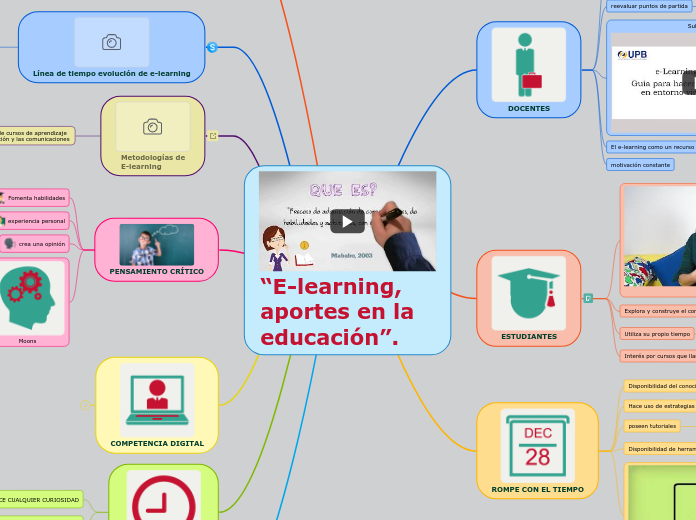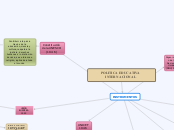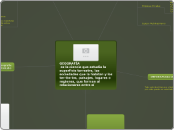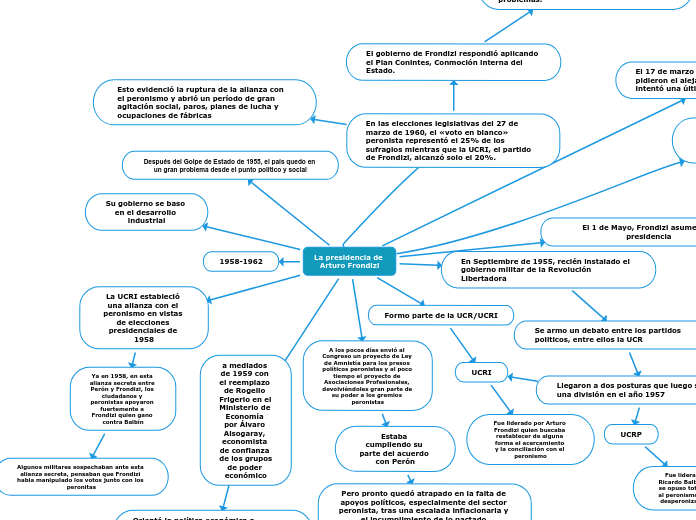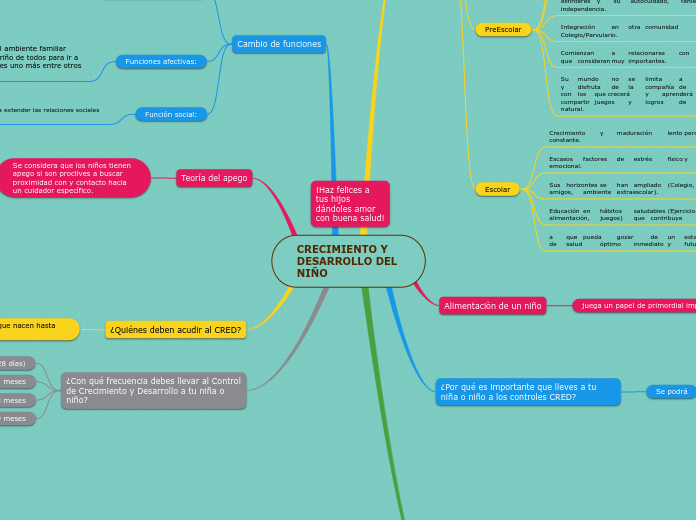BIBLIOGRAFIA
Schneckenberg, D. (2014). El e-learning transforma la educación superior. https://dialnet.unirioja.es/servlet/articulo?codigo=989408
Rivera, P. Alonso C. (2017). Desde la educación a distancia al e-Learning
emergencia, evolución y consolidación. https://dialnet.unirioja.es/servlet/articulo?codigo=6148504
Gross, B. (2017). La evolución del e-learning: del aula virtual
a la red. https://d1wqtxts1xzle7.cloudfront.net/56735368/20577-45155-1-PB.pdf?1528239866=&response-content-disposition=inline%3B+filename%3DLa_evolucion_del_e_learning_del_aula_vir.pdf&Expires=1598141106&Signature=UFOpK7j9K7ctODRqx8i994jpsfk6lSVYozYWO3YgLH1sl1aA9jR7P81E0e-tPvx7I6K-u5fC8XPFTnl-ZiSp0-PCIcz9YKbtktijQiJ4N6e4Nv4YryDNO5m-ukuxpVpm8vkyTLoqVFZmOnfCNuAEHTmklBkgGETgFwWYSIioWF9wJp-M5mSmHB8EZoDoivlDiGTJe~ole9grYbPEVSRltgGyVSCW0lHA~dtpAL~tDsobUdak6cJ26UEHL8x4WHg1hpcFVJWM8fbihyaWpSapFu9Dyc4hX1ZgrtnRr2RnN5MlWBiYtbPZpOhkYRNbDYnncN6qmHs0G4ABavRausp9mQ__&Key-Pair-Id=APKAJLOHF5GGSLRBV4ZA
Nieto, Z. (2018). El e-learning como un recurso de desarrollo educativo. https://revistas.udes.edu.co/aibi/article/view/485/pdf.
Burgos, V. (2007). “Evaluación del desarrollo de experiencias en e-learning en América Latina”. [Tesis de Maestría Universidad de Piura] Disponible: https://pirhua.udep.edu.pe/bitstream/handle/11042/1821/MAS_DET_001.pdf?sequence=1&isAllowed=y
“E-learning, aportes en la educación”.
The Solar System is the gravitationally bound system of the Sun and the objects that orbit it, either directly or indirectly. Of the objects that orbit the Sun directly, the largest are the eight planets, with the remainder being smaller objects, the dwarf planets, and small Solar System bodies.
ACTUALIZACIÓN
Saturn is known most for its rings.
Galileo Galilei first thought it was an object with three parts: a planet and two large moons on either side.
Not knowing he was seeing a planet with rings, the stumped astronomer entered a small drawing — a symbol with one large circle and two smaller ones — in his notebook.
The rings are made of ice and rock and scientists are not yet sure how they formed. The gaseous planet is mostly hydrogen and helium.
Genera nuevos conocimientos
How long does it take for Saturn to go around the sun?
How many days
permanente mejora de la calidad
A planet's day is the time it takes the planet to rotate or spin once on its axis.
Write down Saturn's day measured in Earth days.
How many Earth days
El contenido se actualiza constantemente
Position
ACCESO INMEDIATO
Uranus is an oddball. It has clouds made of hydrogen sulfide, the same chemical that makes rotten eggs smell so foul.
It rotates from east to west like Venus. Its tilt causes extreme seasons that last 20-plus years, and the sun beats down on one pole or the other for 84 Earth-years at a time.
Methane in the atmosphere gives Uranus its blue-green tint. It also has 13 sets of faint rings.
Desde la educación a distancia al e-Learning
A planet's day is the time it takes the planet to rotate or spin once on its axis.
Write down Uranus's day measured in Earth days.
Rivera, C. , Sancho Gil, J.
SATISFACE CUALQUIER CURIOSIDAD
COMPETENCIA DIGITAL
las herraniebtas pueden servir para otras disciplinas
Domino de diversas herramientas
PENSAMIENTO CRÍTICO
Neptune is about the size of Uranus and is known for supersonic strong winds.
Neptune is far out and cold.
The planet is more than 30 times as far from the sun as Earth.
Neptune was the first planet predicted to exist by using math, before it was visually detected. Neptune is about 17 times as massive as Earth and has a rocky core.
Moons
Neptune has thirteen moons that we know of and one more waiting for confirmation.
The largest moon is slightly smaller than Earth's Moon and has active volcanoes which erupt like geysers and eject nitrogen frost over the surface.
Name this moon and at least 4 others.
crea una opinión
How long does it take for Neptune to go around the sun?
A planet's day is the time it takes the planet to rotate or spin once on its axis.
Write down Neptune's day measured in Earth days.
Fomenta habilidades
Metodologías de
E-learning
Una guía para el diseño y desarrollo de cursos de aprendizaje empleando tecnologías de la información y las comunicaciones
Línea de tiempo evolución de e-learning
Con el propósito de conocer más acerca de un atractivo y exitoso modelo pedegógico y didáctico, llamado E-Learning, te presentamos una línea de tiempo de los eventos más relevantes en su evolución.
comunicacion
It was once considered a planet but in August 2006 the International Astronomical Union (IAU) downgraded the status of Pluto to that of “dwarf planet.”
Pluto is unlike other planets in many respects. It is smaller than Earth's moon; its orbit is highly elliptical.
It's a cold, rocky world with a tenuous atmosphere. Pluto is a very active ice world that's covered in glaciers, mountains of ice water, icy dunes, and possibly even cryovolcanoes that erupt icy lava made of water, methane or ammonia.
Orbit around the Sun
How long does it take for Pluto to go around the sun?
Trabajo individual
crea un juicio
experiencia personal
ROMPE CON EL TIEMPO
Earth is a water world, with two-thirds of the planet covered by oceans.
It's the only world known to harbor life.
Earth's atmosphere is rich in nitrogen and oxygen.
Its name originates from 'Die Erde,' the German word for 'the ground.'
Earth may once have had two moons, nowadays it has just one.
Disponibilidad de herramientas
imágenes, vídeos, audios, etc.
poseen tutoriales
How long does it take for Earth to go around the sun?
Google, You tube, etc
Hace uso de estrategias de estudio en forma independiente
A planet's day is the time it takes the planet to rotate or spin once on its axis.
Write down the Earth's day in hours.
Disponibilidad del conocimiento
las 24 horas
ESTUDIANTES
Venus is Earth's twin in size and has no moons.
Its surface has various mountains and volcanoes. Because of its thick, toxic atmosphere that's made of sulfuric acid clouds, Venus is an extreme example of the greenhouse effect. The average temperature on Venus' surface is 900 F (465 C).
Venus spins slowly from east to west, the opposite direction to most of the other planets.
The Greeks believed Venus was two different objects — one in the morning sky and another in the evening. Because it is often brighter than any other object in the sky, Venus has generated many UFO reports.
Interés por cursos que llamen su atención
How long does it take for Venus to go around the sun?
existe motivación
Utiliza su propio tiempo
A planet's day is the time it takes the planet to rotate or spin once on its axis.
Write down Venus's day measured in Earth days.
sigue instrucciones
Explora y construye el conocimiento
genera aportes
DOCENTES
Mercury is the smallest, only a little bit larger than Earth's moon. Mercury has no moon.
It experiences dramatic changes in its day and night temperatures: Day temperatures can reach a scorching 840 F (450 C), which is hot enough to melt lead. Meanwhile, on the night side, temperatures drop to minus 290 F (minus 180 C).
It also has a very thin atmosphere of oxygen, sodium, hydrogen, helium, and potassium and can't break-up incoming meteors, so its surface is pockmarked with craters, just like the moon.
motivación constante
How long does it take for Mercury to go around the sun?
El e-learning como un recurso de desarrollo educativo
Subtopic
reevaluar puntos de partida
A planet's day is the time it takes the planet to rotate or spin once on its axis.
Write down Mercury's day measured in Earth days.
competencias y claves para el proceso
revolución en la forma de entender la enseñanza y el aprendizaje
Our Solar System has eight “official” planets which orbit the Sun.
Each planet is at a different distance from the sun. Name its position.
¿para que?
¿por qué?
